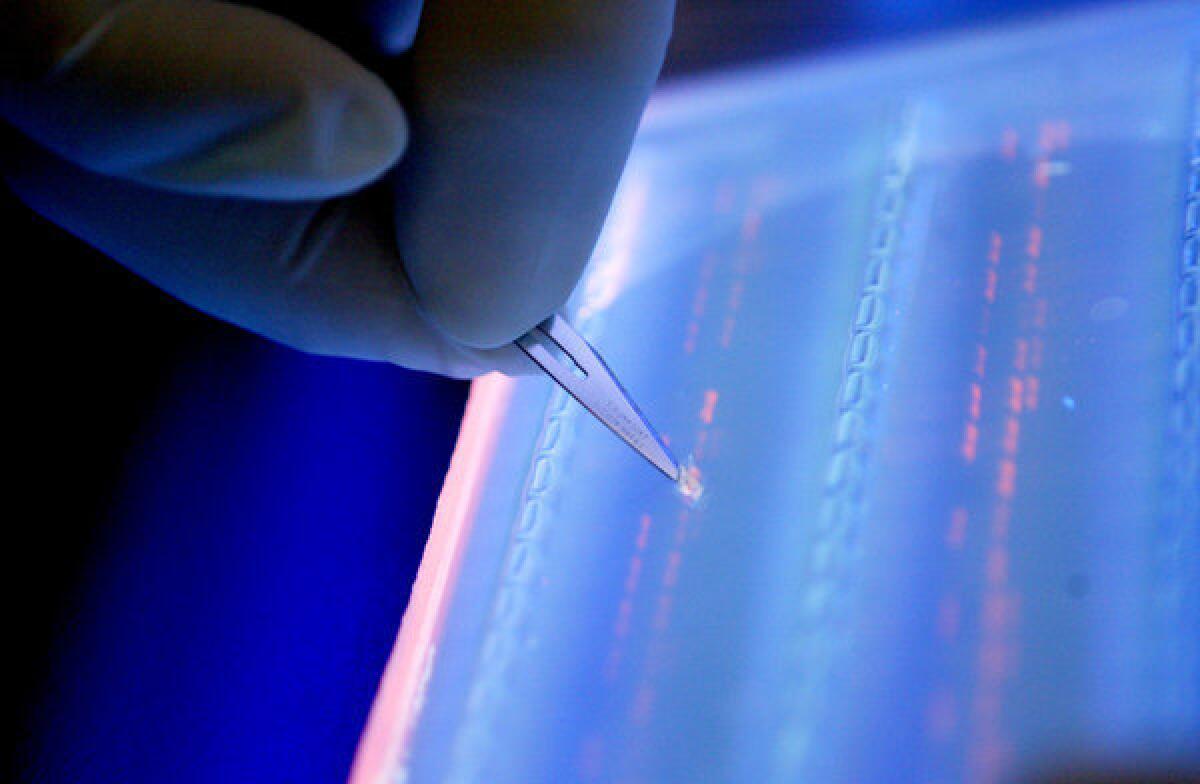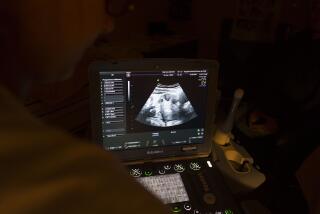Entire DNA of fetus revealed through risk-free testing

Scientists have pieced together the entire DNA sequence of an 18-week-old fetus without having to use any invasive tests that could result in a miscarriage â an advance that offers a glimpse of the future of prenatal testing.
Using blood drawn from the mother and a sample of saliva from the father, the researchers were able to scan the fetusâ genome and determine whether it contained any of the myriad single-letter changes in the DNA code that can cause a genetic disorder. They could even pinpoint which mutations were inherited from Mom, which came from Dad, and which were brand-new.
If the technique is refined and the technology becomes inexpensive â as many experts anticipate â this type of prenatal testing could provide prospective parents with a simple, risk-free way to screen for a broad array of simple genetic disorders, according to the authors of a report in Thursdayâs edition of Science Translational Medicine.
The work is based on the fact that small fragments of fetal DNA circulate in the blood of pregnant women.
Several biotech companies are developing tests that capture those DNA fragments and screen them for signs of Down syndrome and other disorders that result from having an extra copy of an entire chromosome.
But that type of screening is far easier than searching for single-letter variations in individual genes, said senior author Jay Shendure, a geneticist at the University of Washington in Seattle.
An additional chromosome is âthe equivalent of an extra chapter in a book,â he said. âWhat weâre trying to do is pick up a typo in a word.â
To set about their task, Shendureâs team started by sequencing the genome of an anonymous pregnant woman, using a complete sample of her DNA obtained from her blood cells. They also sequenced free-floating DNA fragments extracted from her blood plasma, repeating their work until they had decoded every part of the human genome 80 times.
That plasma contained a mix of 10% fetal DNA and 90% maternal DNA, all in tiny fragments. The scientists needed to be able to tell which pieces were from the mother and which belonged to the fetus.
To solve that problem, the scientists relied on the fact that genetic material is inherited in long strands of DNA, called chromosomes â and that tiny genetic variations on the same chromosome are usually inherited together, in blocks known as haplotypes. If a given haplotype was present in the fetus as well as in the mother, it would be detected in the plasma in extra amounts.
The scientists also sequenced the fatherâs DNA, which was extracted from saliva. This allowed the team to figure out whether genetic variations in the fetus that didnât match the mother were inherited from the father or were new mutations. On average, about 50 new mutations show up in a fetus.
The scientists checked their results against a blood sample taken from the babyâs umbilical cord after birth. Their calculations were more than 98% correct, they found, and they had detected 39 out of the 44 new mutations. None of those mutations had known medical consequences, the researchers said.
This approach could be used to devise a single test to screen for the 3,000 known disorders that are caused by mistakes in single genes. Individually, they are rare, but together they affect about 1% of births.
Technology like this could lead to more widespread screening of fetuses for genetic disorders that could benefit from early treatment, said Dr. Joe Leigh Simpson, senior vice president for research and global programs for the March of Dimes in White Plains, N.Y. It might even help doctors identify women at heightened risk for problems such as pre-term birth, he said.






